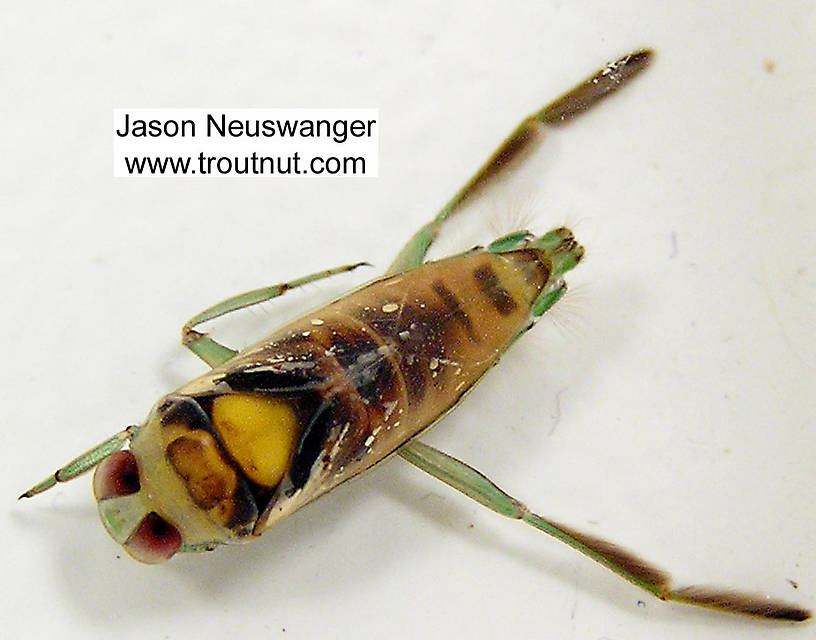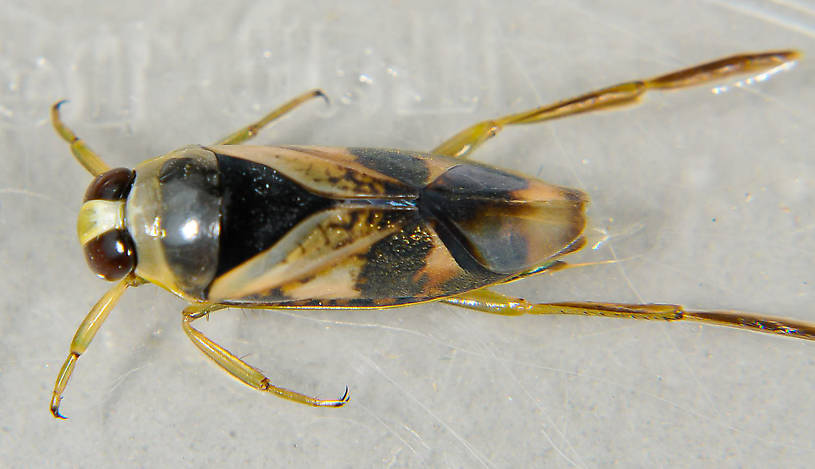
Salmonflies
Pteronarcys californica
The giant Salmonflies of the Western mountains are legendary for their proclivity to elicit consistent dry-fly action and ferocious strikes.
Featured on the forum

This dun emerged from a mature nymph on my desk. Unfortunately its wings didn't perfectly dry out.

Troutnut is a project started in 2003 by salmonid ecologist Jason "Troutnut" Neuswanger to help anglers and
fly tyers unabashedly embrace the entomological side of the sport. Learn more about Troutnut or
support the project for an enhanced experience here.
True Bug Family Notonectidae (Backswimmers)
Backswimmers are often important to trout, especially in ponds. They're one of the insects which usually doesn't factor into a fly angler's decisions at all, but it pays to be aware of them because in just-so situations the trout eat nothing else.
Be careful handling them--they have a painful bite.
Be careful handling them--they have a painful bite.
Where & when
In 954 records from GBIF, adults of this family have mostly been collected during July (22%), August (17%), June (11%), September (10%), October (8%), April (8%), May (6%), and March (6%).
In 52 records from GBIF, this family has been collected at elevations ranging from 23 to 19685 ft, with an average (median) of 2382 ft.
Family Range
Egg-Laying behavior
The adults breathe air. Normally they rest upside down at the water's surface with part of their abdomen sticking up just out of the water to breathe, but they can dive for extended periods carrying an air bubble with them. They are able to leave the water and fly around.Nymph biology
Diet: Other insects, including other backswimmers
Specimens of Backswimmers:
2 Adults
Start a Discussion of Notonectidae
References
- Schwiebert, Ernest G. 1955. Matching the Hatch. MacMillan Publishing Company.
True Bug Family Notonectidae (Backswimmers)
Taxonomy
3 genera (Buenoa, Martarega, and Notonecta) aren't included.



